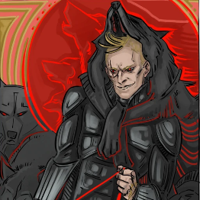The Fox mbtiパーソナリティタイプ
個性
"The Foxはどのような性格タイプですか? The Foxは、ISTP in MBTI、6w7 - sx/sp - 648 in Enneagram、RLOEN in Big 5、SLI in socionics のパーソナリティタイプです。"
I think the Fox is Ti-dominant (ISTP) with Se auxiliary. His behavior shows a strong internal logic and a sensory-driven responsiveness to the immediate environment. Ti — inner territory & rules: Fox operates from a private, internal logic shaped by his identity and environment. For example, even while chained he reacted according to his internal rule: “I’m a fox, I’m a predator —> I attack.” He didn’t try to bargain, negotiate, or make deals the way a Ne-dominant (e.g., ENTP) might. Instead, he resorted to direct action: Fox: “if I wasn’t caught in this snare, i’d kill you” This demonstrates a Ti mindset that follows a consistent internal conclusion about what predators do. When Mole told him, “If you stay in that snare, you’ll die” this presented a new piece of information that cracked his old Ti framework. Ti users change their internal model when they encounter a stronger, verifiable truth, and that’s exactly what happens: the Fox doesn’t keep reacting with the same aggression; he absorbs the new fact, re-evaluates, and shifts from attack —> curiosity —> following the others. That transition (attack —> pause —> follow) shows how Ti can be rigid until confronted with a clear, logical truth, after which it adapts and opens up questions internally. Se — moment-driven reactions: Se is visible in the Fox’s impulsive, sensory-driven responses. His very first encounter with the Boy and Mole shows this clearly: while following their scent across the snow and preparing to attack them, his focus was suddenly interrupted by the sound of a bird. Instead of persisting with a long-term plan, his attention shifted immediately to the new stimulus. This highlights the Se tendency to react to the environment’s immediate cues, where fresh sensory input can override previous drives in an instant. Examples that illustrate his functions: • “Fox: if I wasn’t caught in this snare, i’d kill you” — Ti-rule-driven reaction. • Mole: “If you stay in that snare, you’ll die” — a factual input that breaks the Fox’s previous conclusion and forces Ti to revise. • When the Boy asks why he doesn’t speak, the Fox says: “to be honest I often feel I have nothing interesting to say” — a reserved, inward stance consistent with Ti-dom introspection and limited social storytelling. • Horse replies: “being honest is always interesting” — highlights the Fox’s understated, meaningful contributions when he does speak. His personality development: At first, the Fox seems cold and distant, but his curiosity is awakened by reliable information or by observing others’ thoughts and behaviors. He’s not openly emotional, but he becomes quietly engaged when new, logically convincing data enters his world. Over time, that curiosity can lead to loyalty and understated care once trust is earned. Enneagram possibilities (I’m not really sure): Maybe 5w6, 4w5, or 6w5: • 5w6 captures his isolation, observational style, and curiosity-driven following of the others (knowledge/understanding motive + cautious/security wing). • 4w5 would emphasize a wounded, solitary quality and depth of inner feeling expressed through reserved behavior. This lens highlights his quiet melancholy and sense of being different. • 6w5 frames him as vigilant and skeptical, seeking security through careful observation. It accounts for his cautious loyalty, the way he “tests” trust before giving it, and his tendency to hang back until he feels safe.
バイオグラフィー
“All four characters represent different parts of the same person,” explained Mackesy “the inquisitive boy, the mole who’s enthusiastic but a bit greedy, the fox who’s been hurt so is withdrawn from life, slow to trust but wants to be part of things, and the horse who’s the wisest bit, the deepest part of you, the soul.”
















